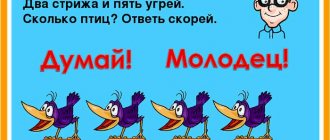Common types of physical education for children
- Physical education and health activities
(massage, gymnastics, exercises, physical education, warm-ups). Daily classes conducted at home or as part of the educational process in educational institutions; - Physical education lessons
. Conducted on the basis of preschool or school educational institutions, at home, with a certain frequency; - Sports sections, clubs, schools.
Specialized classes are conducted by professional trainers; - Yard games and competitions.
Sudden or periodic outdoor activities using certain rules and setting tasks for the child. It is optimal to involve his peers in them. - Sports holidays.
A complex, but educationally and physically useful option for the development of a child. Perhaps as attending an organized event or preparing your own; - Joint sports recreation
: hiking, cycling, etc.
The indicated types of physical education are the most recommended options by teachers and doctors, which can be used both separately and together. The choice of a specific type should be made based on the age and general physical development of the child.
Physical education and health activities (exercises, physical education minutes, warm-ups)
It is recommended to introduce physical education and health activities into the daily educational process from the age of 1, not taking into account the forms used for infants (massage, fitball, etc.)
First of all, the child is introduced to exercises done in the morning before meals. Its duration for preschoolers does not exceed 10 minutes, for schoolchildren - up to 20 minutes. As part of the exercise, the main goal is to warm up all joints and activate the work of all cells of the body. On weekdays, you can limit yourself to a small set of 5 minutes, and on weekends you can do a full set of exercises.
From 5-6 years of age, when using teaching methods that require the child to be in a static position (sitting at a table) for some time, it is advisable to introduce new forms of physical education and health activities - physical education and warm-ups. They are carried out to prevent the development of scoliosis and visual impairment. Carrying out time up to 5 minutes. The form can be chosen based on the age of the child.
Daily gymnastics performed during the daytime has an excellent effect on the development of physical skills. It can be introduced into a child’s life from the age of 3, but the most suitable age is 5-6 years. As part of gymnastics, you can offer to master exercises that improve flexibility, endurance, and stamina.
Physical education lessons
Physical education lessons for children of different ages should be structured in accordance with their physical and mental characteristics. It is advisable to introduce this form of physical education from the age of 3.
For children 3-4 years old, the maximum duration of a lesson should not exceed 15 minutes and should be based on frequent changes of exercises (no more than 3 repetitions of one exercise).
For children 4-5 years old, a physical education lesson can last up to 20 minutes. It is possible to include more complex elements accessible to the child.
From 5 to 7 years old, physical education lessons last 20-30 minutes and are built on the basis of improving qualities such as speed, endurance, and flexibility.
From 7 to 9 years old, the duration of the lesson is up to 35 minutes. The main direction of development is flexibility, endurance, speed. You should carefully monitor the body's reaction to stress. At this age, it is possible to intensify growth, and against this background, a slight decrease in activity may occur (internal organs grow a little slower than the bone and muscle apparatus);
From 9 to 17 years old, a physical education lesson can last from 45 to 60 minutes and include active games, gradually more complex elements, and complex techniques.
Conducting a lesson requires compliance with some rules:
- The child must be completely healthy and in good spirits;
- After the last meal, at least 30 minutes should pass, optimally about an hour;
- Physical education lessons must be planned and conducted once every 2-3 days;
- It is possible to conduct a physical education lesson with elements used during exercise, but the physical education lesson does not replace it, but complements it.
- The principle of the lesson is built according to the classical scheme: warm-up, the main block of exercises and games, a relaxing set of exercises, self-massage, calm walking.
Sport sections
Attending sports sections, clubs and schools is the 2nd stage of a child’s physical development, introduced into the educational process after he reaches a certain level of physical fitness. Workload restrictions for children have been introduced at the state level. Thus, children under 6-7 years old, when visiting sports sections, perform exercises aimed at developing general skills and developing an understanding of the need to maintain a healthy lifestyle.
After the child reaches the age of 6-7 years, physical activity increases depending on the level of training. Thus, professional classes are available to children who have fulfilled the established standards without significant energy expenditure.
The purpose of the section is to improve general physical skills and achieve maximum development in the chosen direction. It is important to choose the right sports section for your child.
Yard games
Yard games, as a form of physical development, are introduced at 3-4 years of age with the involvement of the child’s peers. The main goal is to stimulate the development of qualities such as speed, agility, and endurance. In a playful form, children are invited to play according to certain rules, while striving to achieve a designated goal: catch up, overtake, come first, perform better.
This form of physical education is the most attractive for children, providing them with the most important elements: communication, movement, development.
Sports holidays
Organizing sports events is one of the most difficult, but educationally most productive forms of child physical development. By watching adults prepare, conduct and organize sports competitions, the child develops mental abilities, while learning the need to be active. Participation and the desire to win allow the baby to compete at the top level of his capabilities.
Hiking, walking, joint active recreation
Joint recreation using forms of physical development is an excellent way not only to improve physical skills, but also to improve family relationships and emphasize the importance of a healthy lifestyle.
The type of activity should be selected based on the age and physical fitness of the child.
It is recommended to start using joint hikes and walks by gradually increasing the distance covered by the child on foot during a daytime walk. This could be a visit to a store located at a distance, giving up a vehicle when visiting a clinic, or constantly walking to a kindergarten or club.
After confidently mastering a long walk, adults can organize a hike with rest to achieve the designated goal. To make the event comfortable for all participants, possible stops with interesting rest options and snacks should be provided.
From 6-7 years of age, cycling can be used if the child confidently uses this type of transport. The choice of route must be made carefully, excluding dangerous areas or organizing their passage with maximum safety. For example, if a section of the road runs along the highway, it would be advisable to walk it.
Active family recreation is one of the ways to develop a child physically






